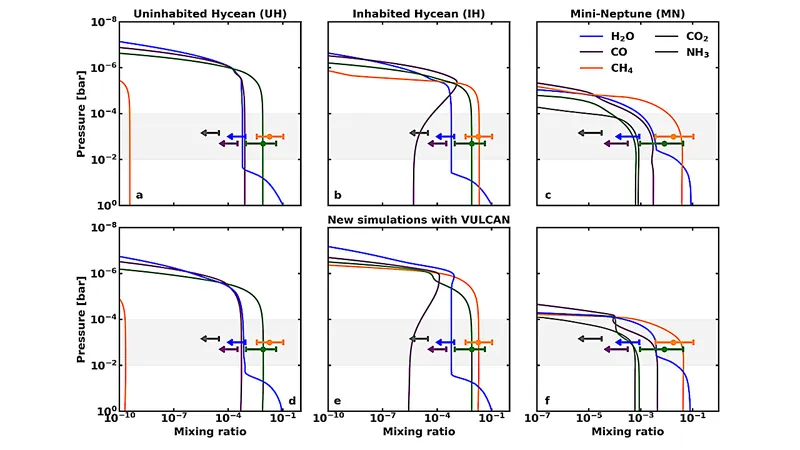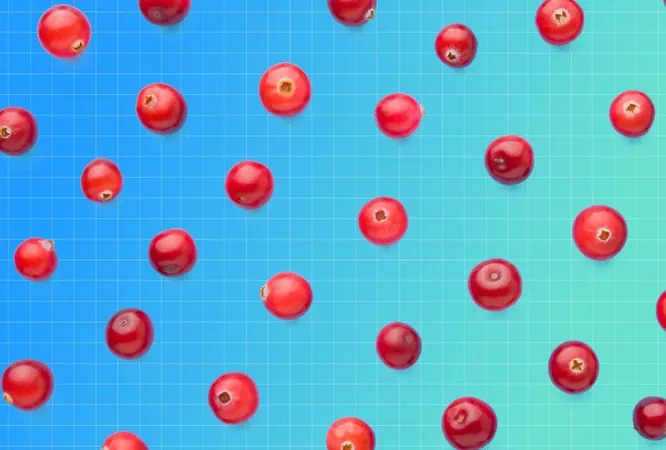
New Insights into Photochemical Modeling of Potentially Habitable Hycean Worlds
2024-10-11
Author: Sarah
Introduction
The James Webb Space Telescope (JWST) is making significant strides in our understanding of temperate sub-Neptunes, exemplified by its groundbreaking detection of carbon-based molecules in the habitable-zone sub-Neptune K2-18 b. The findings highlight the presence of methane (CH4) and carbon dioxide (CO2), while ammonia (NH3) and carbon monoxide (CO) were notably absent, aligning with earlier photochemical models that suggested the possibility of a habitable ocean on this Hycean world.
Debate on Mini-Neptune vs Hycean Model
However, recent research has opened up the debate on whether these observed abundances could instead fit a mini-Neptune model, spurring further examination of these competing theories. Our study delves into the complexities of photochemical modeling, using K2-18 b as a focal point to explore various scenarios.
Modeling Challenges
The analysis reveals that the conclusions drawn in previous studies are highly sensitive to numerous modeling parameters including photochemical cross sections, incident stellar radiation, surface pressure, ultraviolet albedo, and the overall metallicity of the atmosphere. These factors can dramatically influence the resulting molecular abundances detected.
Broad Range of Models
By investigating a broad range of models, we analyzed scenarios that align with the detected molecular populations on K2-18 b. Our results indicate that while the mini-Neptune hypothesis fails to account for most of the observed abundances, both inhabited and uninhabited Hycean scenarios provide a more compatible explanation.
Uninhabited vs Inhabited Hycean Models
In particular, the uninhabited Hycean model effectively explains many of the abundance constraints, although it struggles with methane levels, which are often found to be lower than expected, depending on the chosen model assumptions. Conversely, the inhabited Hycean model aligns well with all observed abundances under the supposition that methane is largely of biogenic origin.
Conclusion
This study underscores the necessity for thorough and systematic photochemical modeling, along with careful interpretation of chemical abundance data, when identifying candidate Hycean worlds. The implications of understanding these atmospheres could potentially lead to discovering habitable environments beyond our solar system.
Comparative Analysis Insights
Additionally, the comparative analysis of photodissociation cross sections for twelve different molecules across three models offers crucial insights into how various elements interact under different environmental conditions. By highlighting the distinctions in absorption and dissociation processes, these findings pave the way for more refined models in the exploration of exoplanet atmospheres.
Future Directions
As we continue to unravel the complexities of these distant worlds, the research opens new avenues for understanding the potential for life on exoplanets, particularly those resembling our own planet's oceans. For researchers in astrobiology and planetary sciences, these insights could be pivotal in guiding future explorations of the cosmos.



 Brasil (PT)
Brasil (PT)
 Canada (EN)
Canada (EN)
 Chile (ES)
Chile (ES)
 España (ES)
España (ES)
 France (FR)
France (FR)
 Hong Kong (EN)
Hong Kong (EN)
 Italia (IT)
Italia (IT)
 日本 (JA)
日本 (JA)
 Magyarország (HU)
Magyarország (HU)
 Norge (NO)
Norge (NO)
 Polska (PL)
Polska (PL)
 Schweiz (DE)
Schweiz (DE)
 Singapore (EN)
Singapore (EN)
 Sverige (SV)
Sverige (SV)
 Suomi (FI)
Suomi (FI)
 Türkiye (TR)
Türkiye (TR)